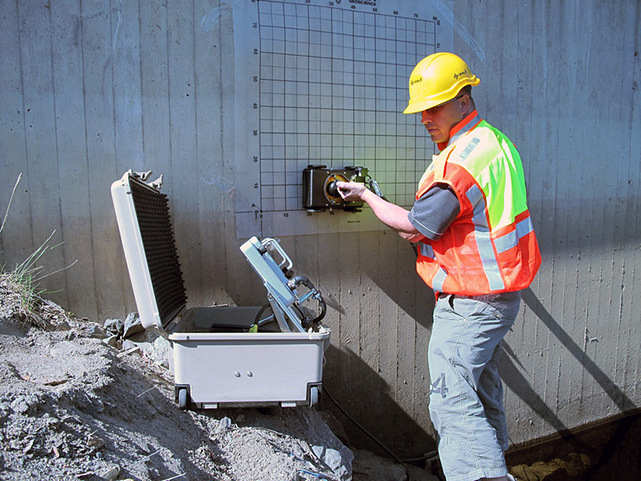RainierGPR Service Areas: Comprehensive Protection for Concrete Scanning
RainierGPR Service Areas: Comprehensive Protection for Concrete Scanning
Blog Article
Concrete Scanning: A Crucial Action In The Direction Of Making Certain Structural Stability and Security
In the realm of building and facilities maintenance, the value of concrete scanning can not be overemphasized. This careful procedure holds the essential to introducing possible threats concealed underneath the surface area of apparently strong structures. By employing advanced technology and methods, concrete scanning works as a pivotal device in ensuring that the stability and safety of buildings and bridges are maintained to the highest standards. Nonetheless, beyond its surface-level implications, the role of concrete scanning extends much deeper than satisfies the eye.
Relevance of Concrete Scanning
Concrete scanning plays a critical function in ensuring the architectural honesty and security of structures and infrastructure tasks. By using innovative innovations such as ground-penetrating radar (GPR) and electro-magnetic induction, specialists can non-destructively check concrete structures to find potential defects, voids, embedded things, and support layout. This process enables very early discovery of anomalies that might endanger the stability of a framework, preventing expensive problems and making sure the safety and security of passengers.
Prior to boring, reducing, or coring right into concrete, scanning assists determine the accurate places of rebar, post-tension cords, and other embedded components, lowering the threat of accidental hits that can lead to architectural weaknesses. Additionally, concrete scanning aids in quality control by verifying the density of concrete covers and finding any type of inconsistencies that may influence the general sturdiness of the structure.
Innovation for Concrete Assessment
Advantages of Early Detection
Prompt discovery of architectural issues can significantly alleviate dangers and make sure the long life of building and construction tasks. By identifying prospective issues early on in the construction process, stakeholders can take positive steps to deal with issues before they escalate into larger and more costly troubles. Among the key advantages of very early detection is the prevention of architectural failures, which can pose significant safety threats and bring about project hold-ups and economic losses.
Additionally, early detection permits for prompt repair services and upkeep, which can aid expand the life expectancy of the framework. By dealing with problems quickly, building and construction groups can stay clear of pricey repairs and even the requirement for premature substitute of structural components. This aggressive approach not just saves money and time but additionally improves the general safety and security and longevity of the construction project.
Furthermore, very early discovery can boost task preparation and decision-making by giving stakeholders with important insights right into the condition of the structure. Equipped with this information, job managers can make enlightened options relating to building timelines, products, and methods, bring about more effective and reliable job results.
Making Certain Architectural Stability
Making sure the structural stability of a construction job is critical to its security and long life. Structural stability refers to the ability of a building or framework to preserve its type and function under numerous tons and environmental problems. To achieve this, detailed analysis and monitoring of the structure are vital. Concrete scanning plays an essential role in guaranteeing architectural stability by identifying possible problems such as spaces, delamination, or support corrosion that could compromise article source the honesty of the structure in time.
By using sophisticated scanning technologies like ground-penetrating radar (GPR) and electromagnetic induction, building professionals can non-invasively examine concrete frameworks to identify locations of problem under the surface area. This aggressive method permits for the very early discovery of weaknesses or issues, making it possible for prompt repair services or reinforcement to avoid architectural failings.
Routine concrete scanning throughout different building and construction phases and throughout the life process of a structure can aid preserve its stability, minimize dangers, and ensure the safety and security of residents. By prioritizing architectural security via concrete scanning, building jobs can boost their durability and sturdiness, eventually adding to higher safety and security and long life.

Protecting Against Crucial Failings
Applying routine examinations, such as concrete scanning, can expose covert flaws like gaps, splits, or rust that could endanger the honesty of a structure. By making use of advanced scanning modern technologies like Ground Penetrating Radar (GPR) or Concrete X-ray, engineers can non-destructively analyze the condition of concrete and identify weak like it factors that need reinforcement or repair service.

Final Thought
In conclusion, concrete scanning plays a critical role in ensuring architectural stability and safety by utilizing innovative innovation for early detection image source of prospective problems. This positive technique assists protect against crucial failures and makes certain the stability of structures. It is crucial to prioritize concrete assessment as a common practice to safeguard the longevity and security of buildings and facilities.
Concrete scanning plays an important function in guaranteeing the structural honesty and security of structures and framework jobs. In addition, concrete scanning aids in high quality control by validating the density of concrete covers and finding any inconsistencies that might impact the general sturdiness of the framework. Concrete scanning plays a critical duty in guaranteeing structural stability by identifying potential issues such as spaces, delamination, or support rust that might jeopardize the stability of the framework over time.

In verdict, concrete scanning plays a crucial duty in making certain architectural honesty and safety by making use of advanced modern technology for very early discovery of prospective concerns.
Report this page